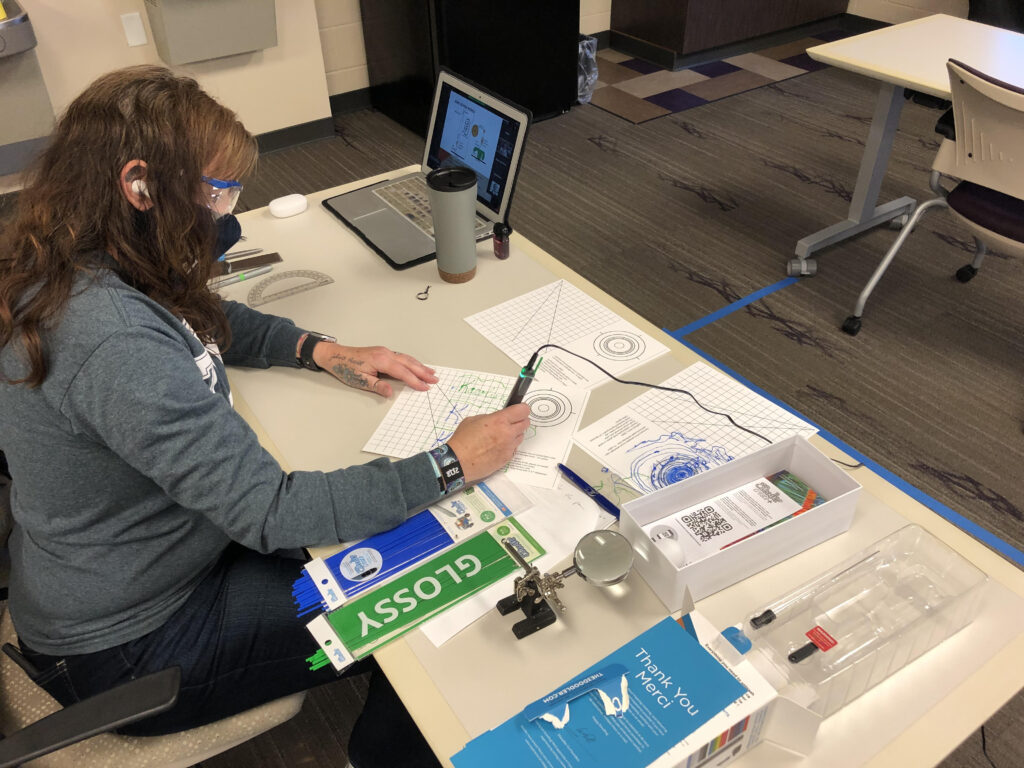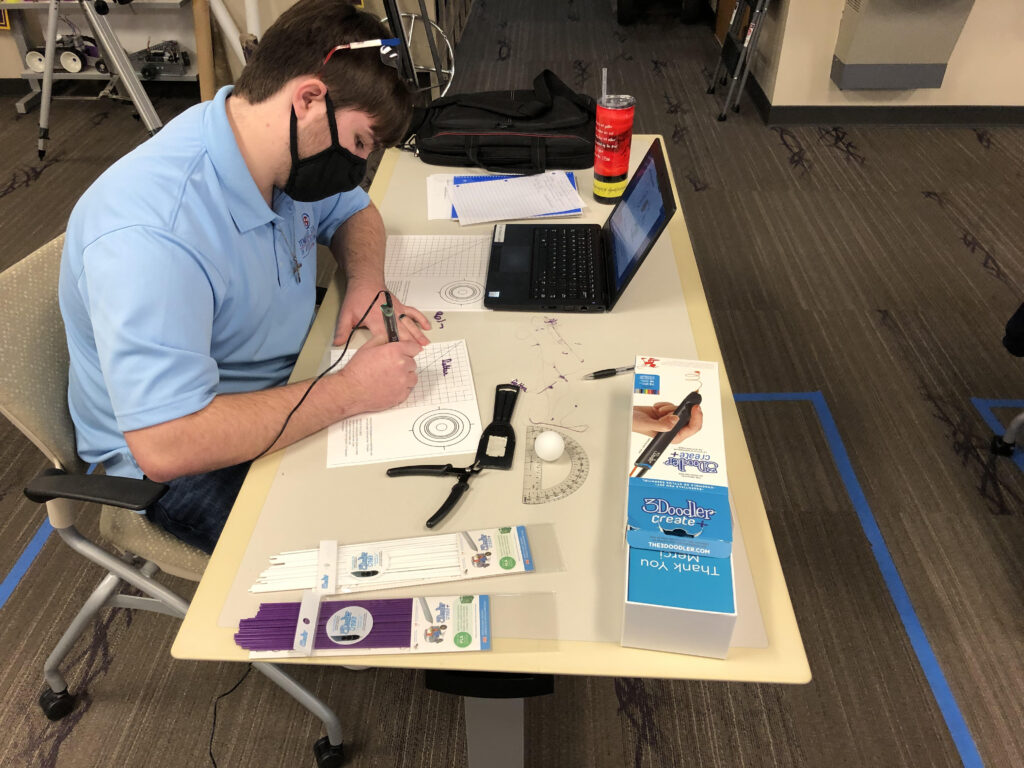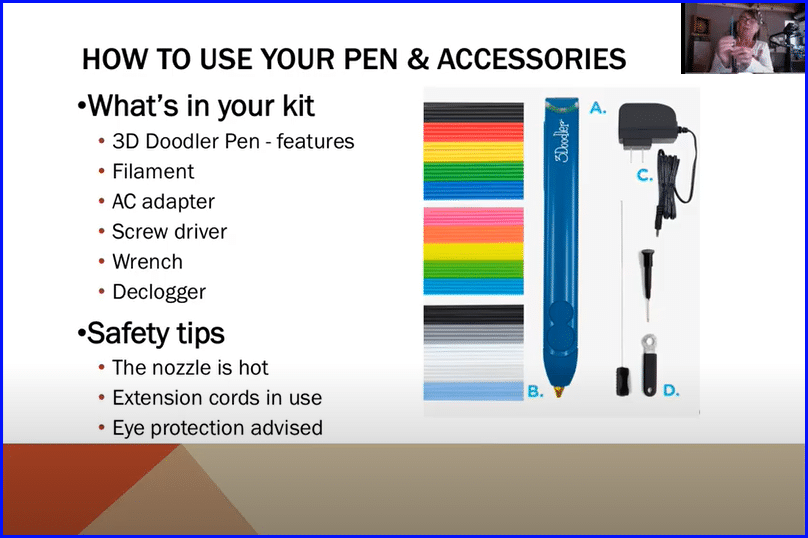Tennessee Tech AM-WATCH project offers virtual workshop showcasing what’s possible with a 3D Pen.
In early January, Tennessee Tech University offered a special Virtual AM-WATCH Studio Workshop with its full day seminar: Diving into Additive Manufacturing Practices via 3D Pen Technology. In this course, Kim Grady, an accomplished NSF Principal Investigator and Instructional Technologist, created and conducted the 3-hour workshop for high school and technical college educators interested in teaching 3D printing skills.
Kim uses the 3Doodler 3D pen in this workshop to demonstrate 3D printing concepts such as layering, joining, geometry and measurement, and adding function to an object. If you are asking: What is a 3D printing pen? — it is a device designed to allow you to make PLA or ABS plastic 3D objects without a 3D printer. Essentially, the 3Doodler Pen is a handheld extruder.
The original 3Doodler originated with a 2013 Kickstarter (crowdfunding platform) project that made more than two million dollars above the fundraising goal. The company offers a variety of pens including easy to handle models for young hands and advanced control models for professionals.
Of course, there are other makes and models of 3D pens on the market and we will list a couple of reviews that share pros and cons for many of them. This will help you find the best 3d printing pen for your needs or your students’ needs. If you are searching for products and ideas, consider also using “3D printing pen” or “3D drawing pen” as near-synonymous terms. Many consider the 3D pen to be a young cousin to the 3D printer, a handheld one, at that.
You can watch the full 3-hour YouTube video, “Diving into Additive Manufacturing Practices via 3D Pen Technology,” also embedded here:
Tennessee Tech, through its AM Watch project and team, sponsored and delivered the workshop in collaboration with TEAMM’s Principal Investigator (PI) Mel Cossette and Kim Grady. Kim has been a MatEdU partner since 2004, an active participant for many NSF grants and continues to develop hands-on curriculum for a wide range of educators. She has produced downloadable courses and materials here on TEAMM as well as on MatEdU, including:
You also can find the complete collection of educator resources at the TEAMM Module page and on the MatEdU Module page (well over 100 modules you can download in PDF and PPT formats).
Dr. Ismail Fidan, who leads the AM-WATCH program, opened the workshop exploring and explaining how Additive Manufacturing is “a new way of making.” Graduate students followed Dr. Fidan’s remarks: Seymour Hasanov gave tips on the fundamentals of design, followed by Ankit Gupta highlighting various materials for AM, with Tyler Edwards explaining 3D Printer Parts and Operating Principles.
Kim Grady’s three-hour session was packed with detailed explanations for how to use the 3D pen to teach complex 3D printing concepts. She defined and demonstrated the basic concepts then guided the participants, virtually, through hands-on application.
Participants started with the basics of extrusion by writing their initials and fabricating basic shapes. To get a solid grasp on how wire framing and layering is used to fabricate real-world objects from PLA filament; squares were joined to create a hollow cube (shown below) and half spheres were joined to create a hollow ball. To illustrate and get experience with design, snowflakes with repeating hexagon shapes were constructed. “Real” 3D printing vocabulary and concepts were stressed throughout, making this workshop unique to any other 3D pen tutorial or workshop currently available.
As a “final project,” participants were challenged to apply what they learned to add function to their objects. The cube and ball concepts were used to fabricate a ball and socket, and the snowflake’s repeating shapes design concepts were applied to fabricate functioning gears.
Final project results and ideas for how to use the 3D pen in your classroom can be viewed on the YouTube link above.
Resources:
- You can visit the 3Doodler page directly. The New York Times Wirecutter review “The Best 3D Pen” recommends it highly as well. In fact, they do not list others and only recommend this one – a significant statement for them. There are educator-specific classroom kits under their “Schools” tab. Basic sets start around $169 (but is on sale frequently for around $89) and a Pro set is available at $199.
- Although a little dated, from 2019, this “Best 3D Pens” list from 3DInsider is well-rounded and linked to the Amazon listings for each pen (no affiliate relationship with us).
3D Pen Workshop Photo Gallery




